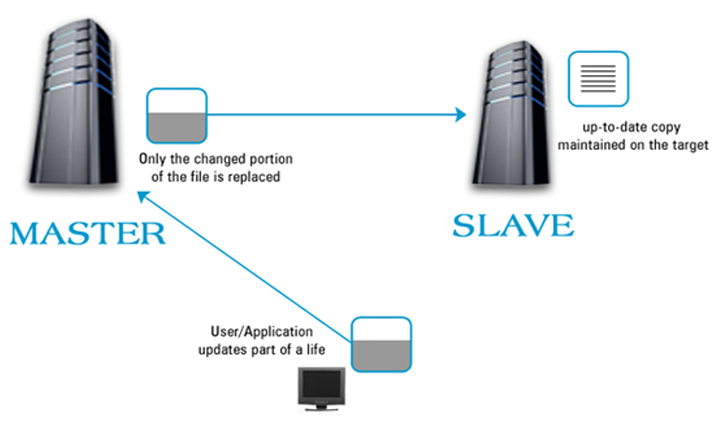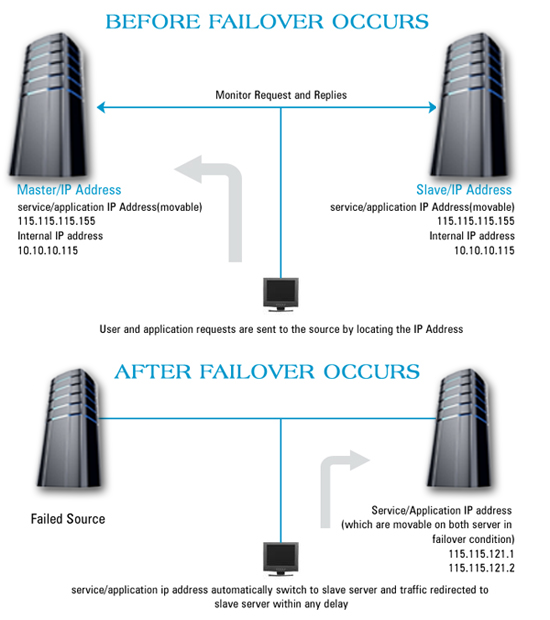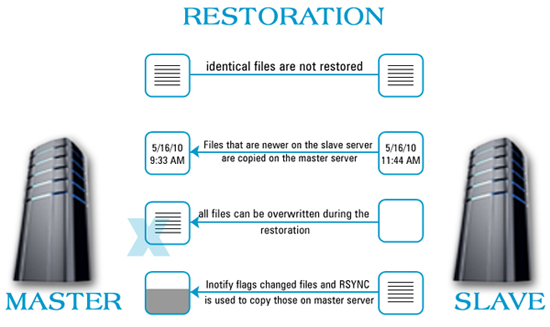Server Mirroring is a process of duplicating data from the “master” server to the “slave” server so that an exact copy of the data exists on both servers. This involves a process in which a backup server is utilized for replicating data from the master server. Mirroring rules are implemented and configured on the master server so that if it becomes unavailable for any reason, the slave server can take its place immediately and start providing service without any downtime.
The Server Mirroring methodology has several advantages:
1) Data Backups: Rsync technology and FAM modules monitor changes in the file system on the master server, thereby replicating only the changed files on the slave. This results in a real-time backup copy of data.

2) Disaster Recovery: Real-time disk-to-disk data is synchronized without any downtime making data available on both of the servers. In the case of hardware failure, data can be recovered from the available server and quickly restored.
Mechanism of a Mirrored Solution:
1) Data Replication: In a Mirroring Solution, two similarly configured servers are set-up in two different racks. One is set as a master server, or primary server, and other one as the slave server, or secondary server. A mirroring mechanism is implemented by using Rsync and FAM modules.
FAM modules monitor the file system. If there is any change in any file, it gets notified. Then a request is sent via Rsync to update and immediately duplicate the file on the slave server. This process uses a negligible amount of server resources even if the size of the changed file. This process is all completed within a very short period of time.

2) Failure Monitoring/Failover: The process in which slave server takes the place of the master server when the master server goes down due to any technical issue or hardware failure is called failover. When the failover occurs, the user and any application requests going to the master server are redirected to the slave Server.

This process is managed by monitoring a script running on the slave server which is “binded” with the secondary IP of the master server and other dedicated IP addresses of the slave server. The script keeps monitoring the apache and ping requests of the master server. If there is any delay, website and application requests are re-directed to the slave server in real-time and the slave server performs exactly as the master server would have.
3) Restoration: Restoration is the process in which the data replicated on the slave server is restored on the master server while the master server was unavailable. There is no need to worry about which file has been updated or changed as Rsync on the slave server keeps the information about the updated files.

Once the master server is up, it does not contain the same data as slave server, so Rsync will restore the incremental data from the slave server. The restoration process can also be used in the case of a disk crash or hardware failure if there is up-to-date data on the slave server.
Load Balancing Server is also a good option for the most demanding websites and applications. Tier.Net offers wide range of PREMIUM Dedicated Servers in multiple data center locations. We can therefore deliver a robust failover solution to boost your business’ online presence. With a highly redundant dedicated server cluster physically located in different data centers, we are able to prevent data loss and downtime.